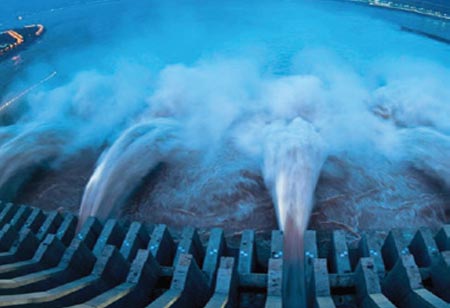The Textile Industry is one of the leading sectors in the Indian economy as it contributes nearly 14% to the total industrial production. It is a fact that the integrated composite textile mills are water intensive industry. On the basis of various studies in India, the water requirement to produce 1 kg of textiles is 200 liters.
Effluent characteristic of textile plant depends upon the type of fabrics being processed, dyes used, chemical used, and dye fixing process. Maximum effluent water is being generated during washing process between two successive processes.
To treat the entire trade and domestic effluent water with latest high efficiency treatment technology convention plant in which Primary Treatment (physicochemical treatment), Secondary Treatment Plant (MBBR-Biological treatment) and Tertiary Treatment Plant (Sand Filter, ACF, UF, RO, MEE).
1. Physio Chemical Treatment:-
For treating industrial effluent water, companies should install Physiochemical Effluent Treatment plant. Effluent from the factory is passing through a bar screen chamber and collected in an oil separation tank equipped with a partition and tee to separate free oil from effluent. Free oil thus separated in skimmed off using an oil skimmer. Equalization ensures that the affluent have uniform characteristics in terms of pollution load, pH and temperature. The effluent is then subject to flash mixing for the addition of coagulants & Flocculants and processed through clariflocculator and settling tank. The sludge from the clariflocculator is then further fed to Sludge Thickener to reduce the water content of the sludge. Selection of appropriate coagulants and doses of chemicals are determined on the basis of treatability study of effluent samples.
The chemical Treatment helps in reduction of color and suspended solids. A significant reduction in BOD and COD values is also observed.
There are four steps involved to treat the effluent water before reusing/recycle in textile process.
Belt Press (Dewatering System)
The sludge disposal cost for all ETP operators is coming more than 30% of primary treatment cost which we can easily reduce by installing high efficient Belt Press Dewatering Machine. One high efficient Belt Press machine is equivalent to 06 filter press machines. The water content on the sludge is less than 75% and after this, the sludge is being spread over the sun dry "bed for further moisture reduction and thus the net moisture content in the sludge is coming less than 55% which helps to decrease the sludge disposal cost.
-
MBBR technology employs thousands of polyethylene biofilm carriers operating in mixed motion within an aerated wastewater treatment basin
Ravi Toshniwal, Managing Director, Banswara Syntex Ltd.
Sun Dry Bed For Sludge Moisture Reduction:
2. Biological Treatment PlaNT (MBBR):-
It is very important to feed the Primary treated water into RO plant with low COD & low TDS content, otherwise the UF and RO membrane desired life will get reduce. Without adding any chemical, the COD reduction can be possible only on Biological treatment.
Biological treatment process helps to further reduce BOD and COD values. The latest technology Moving Bed Bio Reactor (MBBR) plant which is after the Physio Chemical treatment plant. The beauty of this MBBR plant is no need to install the Sewage Treatment Plant (STP) in Industry for treating the domestic sewage effluent separately.
MBBR technology employs thousands of polyethylene biofilm carriers operating in mixed motion within an aerated wastewater treatment basin. Each bio carrier increases productivity by supporting the growth of heterotrophic and autotrophic bacteria. Sewage water is another source for bacterial growth to achieve high-density bacteria in the MBBR plant. As the industry waste is high in TDS but low in COD/BOD and the Domestic Effluent have low TDS and high COD/BOD, the mixing of these both actually helps to treat it. These high-density bacteria achieve high-rate of biodegradation while offering process reliability and ease of operation. This MBBR Process Technology is an excellent solution for COD/BOD reduction, Nitrification and Total Nitrogen removal.
Boifilm Carrier
3. Pressure Sand Filter And ACF System:-
For reducing the turbidity & TSS from MBBR treated water with the help of MGF (Pressure sand filter) and ACF (Activated Carbon Filter) and then the water is being sent to tertiary treatment plant.
4. Tertiary Treatment System(UF & RO )--- 95% Recovery
High pressure membrane filtration technology (RO) is the best solution to get desired water quality from the secondary treated effluent water. We can have prefilter i.e. UF and Micron filter and then Reverse Osmosis (RO) is the good system for tertiary treatment. 100 percent rejected water will be treated in second stage RO in which Sea water membrane will be there which will help to filter high TDS effluent water. The second stage RO rejected water will be sent to MEE plant (Multi Effect Evaporator) thus water will have more than 25000 ppm TDS and can be maintain zero liquid discharge in well condition.
